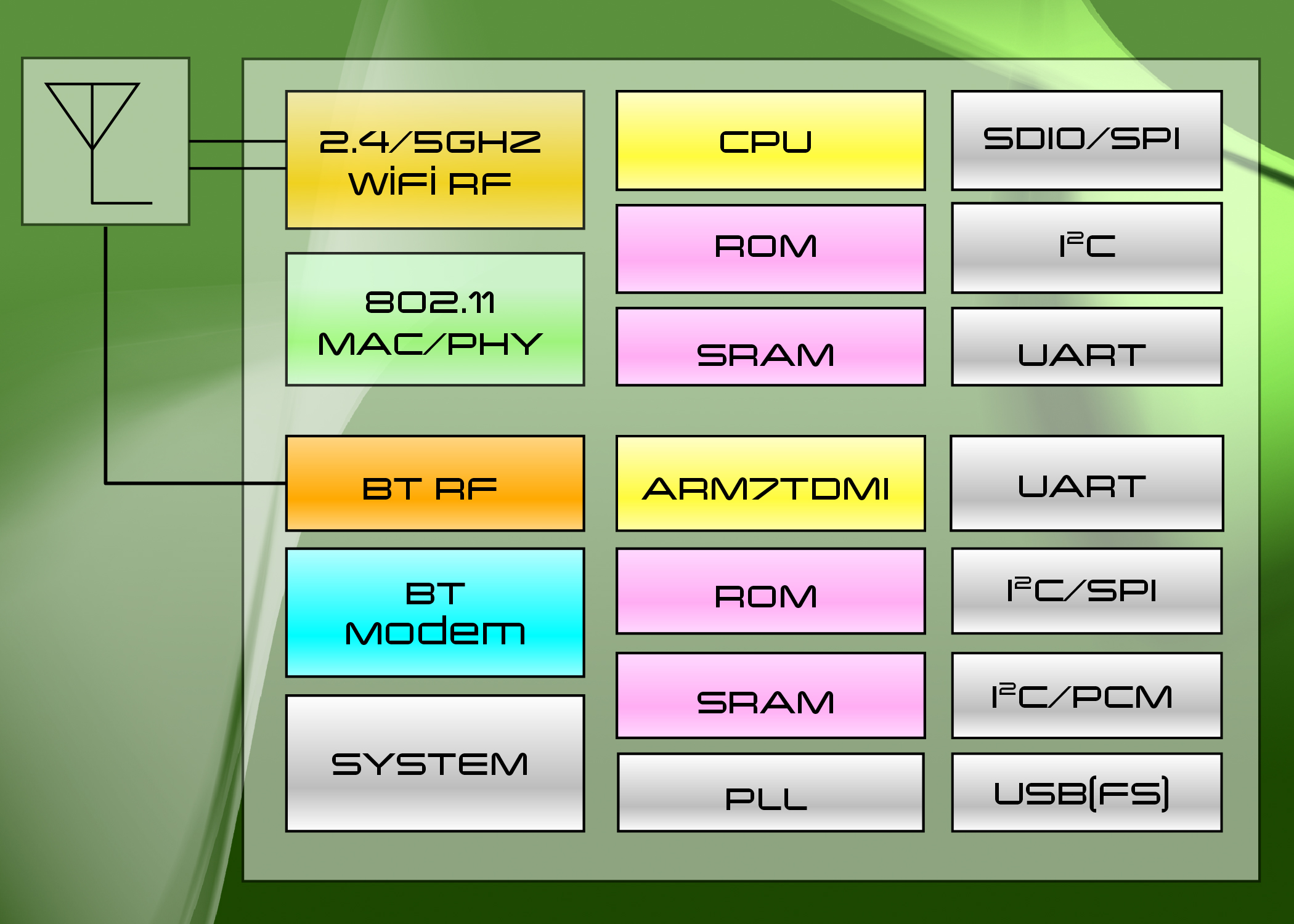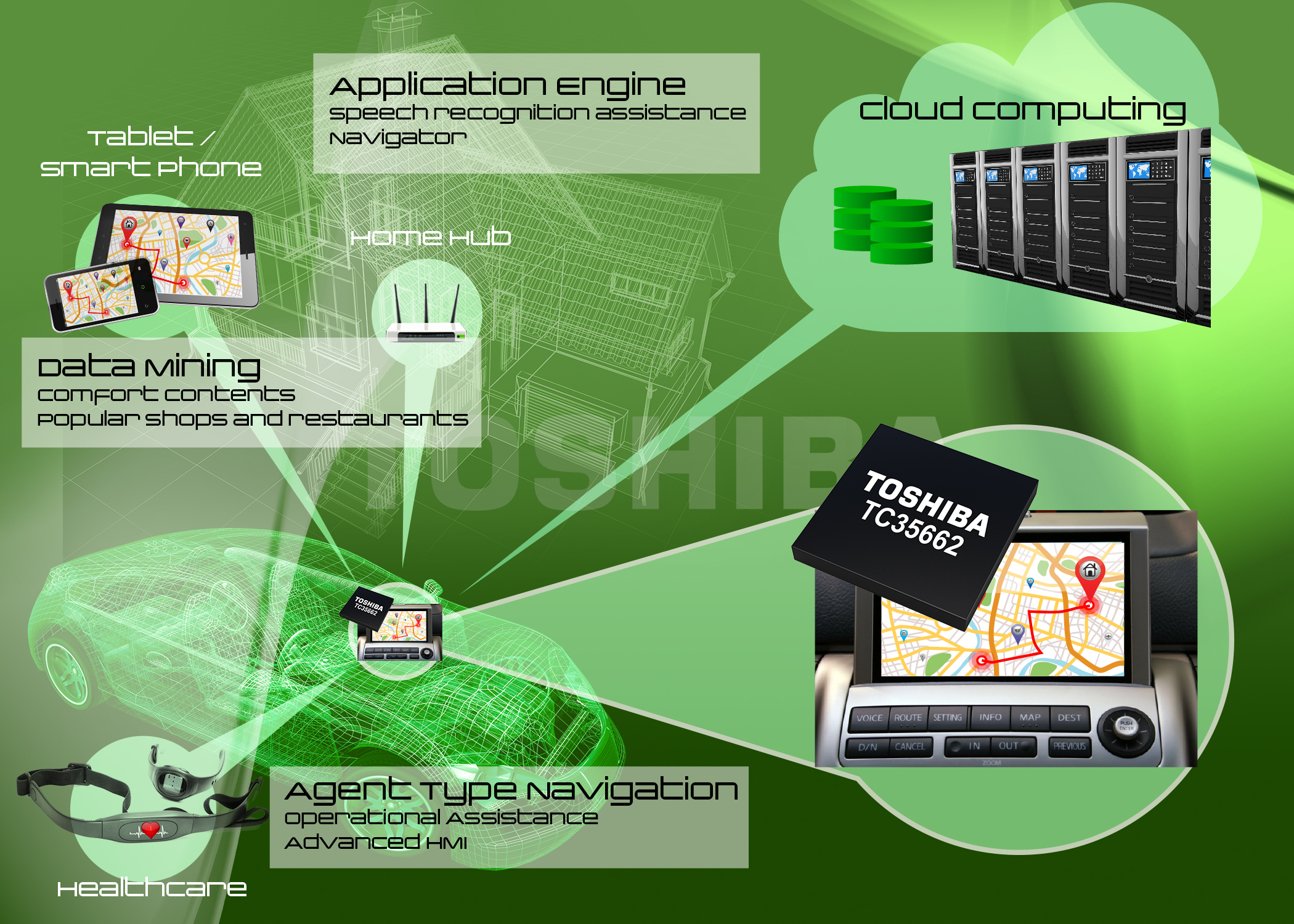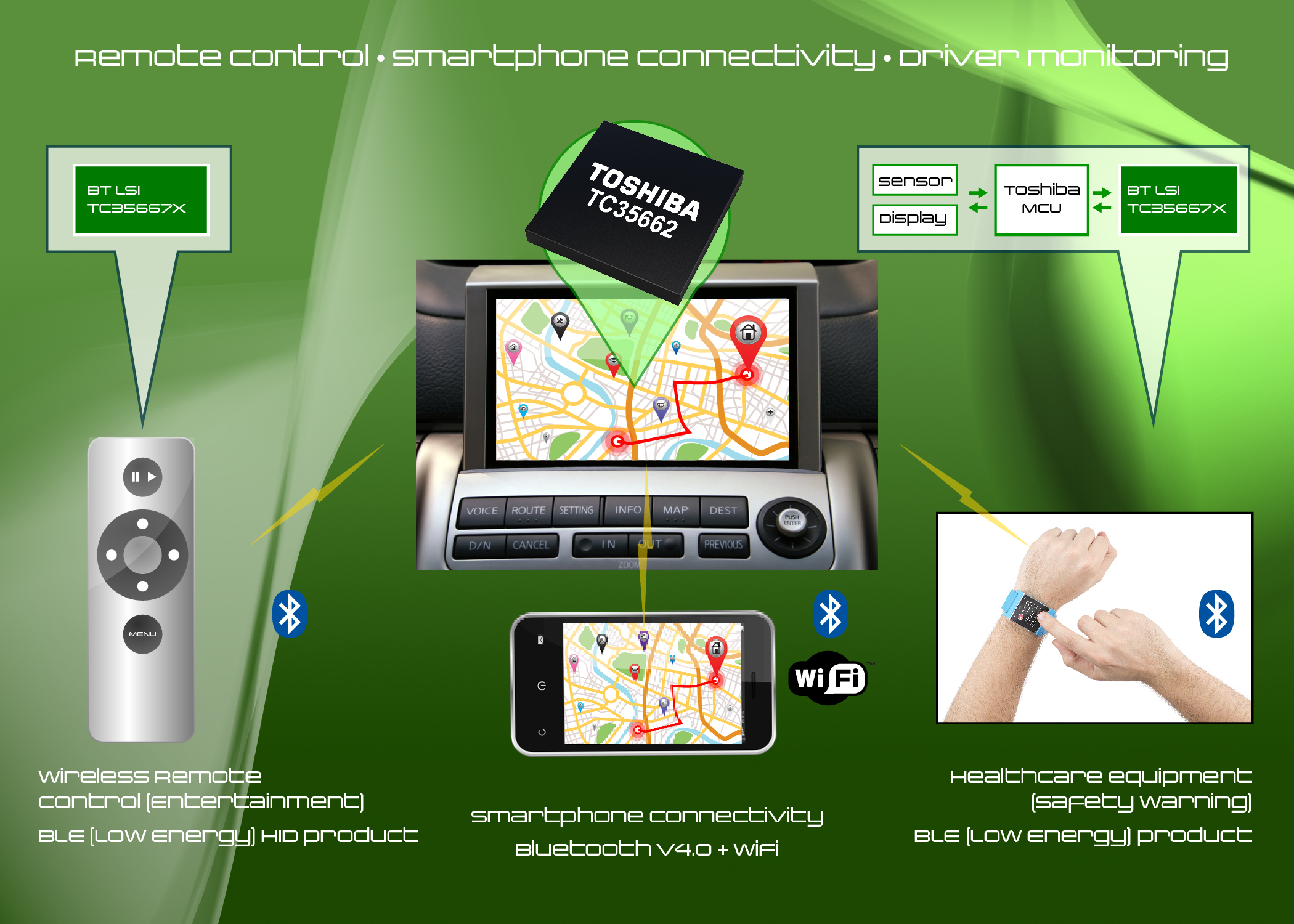The case for the connected car
As consumers start demanding more connected cars, multiple wireless networks including Bluetooth and WiFi must coexist within the vehicle. Semiconductor integration holds the key to ensuring interoperability within tight cost, size and power constraints. By Heiner Tendyck, Principal Engineer for Solution Marketing and Strategic Business Planning, Toshiba Electronics Europe.
A wave of connectivity is sweeping through everyday items such as smartphones, televisions and various domestic appliances, leading to improvements in aspects like convenience, enjoyment and energy efficiency. Enabled by on-going innovation in automotive electronics cars are joining in the revolution, as electronic systems take control of an increasing number of functions in all areas of the vehicle. The automotive sector is adopting connected technology enthusiastically as part of its most significant phase of innovation since the creation of the automobile itself.
According to IHS more than 55m people around the world will have internet access built into their vehicles by 2016. This represents a significant level of market penetration, bearing in mind that industry analyst LMC Automotive predicts a world-wide production of roughly 100m vehicles in 2016. The connected car is a concept that offers many opportunities for car makers, equipment suppliers, content and services providers and road-transport authorities. Enhanced access to social networking, personal content or cloud services, for example, could help car brands attract a younger demographic or business users, and build closer relationships with customers.
When home, the connected car can join the home network, enabling owners to download personal content such as music and video to in-vehicle storage such as a solid-state disk incorporating automotive-qualified Flash. On the road, autonomous communications between vehicles and traffic systems opens up exciting possibilities for improving congestion control and road safety. Applications leveraging car-to-car communication are also expected to emerge in the future.
Both Europe and the USA have been developing communication standards that will enable data exchange between high-speed vehicles and between the vehicles and roadside infrastructure. In 2010, the IEEE approved the IEE802.11p amendment, which adds wireless access in vehicular environments to the IEE 802.11 standard.

While many benefits are touted, many questions also arise. Data protection and privacy are important issues. Another significant concern is driver distraction; the delivery of connected-car services and features must help, rather than hinder, the driver’s concentration, for example by eliminating any need for drivers to turn to their personal mobile devices.
Creating a workable solution
The connected car will use multiple wireless channels simultaneously, to manage connections among sensors within the vehicle, between the vehicle and external mobile networks and hotspots, and between the vehicle and nearby traffic systems as well as other vehicles capable of car-to-car communication.
One likely scenario is that the driver’s smartphone will provide a 3G or LTE mobile broadband connection, as well as GPS, and will connect to the in-vehicle networks using a combination of Bluetooth and WiFi links. This provides the important capability of allowing access to the driver’s favourite apps and content on the smartphone, as well as services like Internet, email and navigation, via the car dashboard or centre-console displays (often called head units). This approach can help to satisfy concerns about driver distraction, as the in-car displays are fixed in an ergonomically correct position and designed for ease of use while driving. The adoption of both Bluetooth and WiFi has been driven by the availability of these technologies in portable devices such as Bluetooth handsfree kits and audio or video streaming devices such as smartphones and tablets. These devices are often brought into cars and the wireless connections provide a bridge between the consumer electronics devices and automotive systems. Some connected cars may have a built-in mobile connection accessed via an on-board SIM, but these still tend to use Bluetooth and WiFi for various communications within and around the vehicle.
Classic Bluetooth technology (up to BT V3.0 EDR), allows application data rates up to 2.1Mb/s (payload), provides an ideal communication channel for handling telephone audio or voice-controlled features within the cabin, or for playing back music from occupants’ smartphones. At the same time exchange of phonebook or SIM data, traffic data or diagnostics is feasible between car and mobile phone.

The new BLE technology (as part of the BT4.0 standard) consumes a fraction of the power of classic Bluetooth and can support non-voice applications at throughput rates up to 305kb/s. Connections can quickly be set up (low latency), and provide enough bandwidth to support wireless remote control of various subsystems and connect sensors such as tyre pressure, temperature or humidity sensors for various safety, powertrain and comfort applications. A Bluetooth connection can also be established easily as a convenient channel for setting up WiFi connections.
Despite requiring more complex software, WiFi, is able to support data rates of 50Mb/s and greater, and is therefore suited to high-bandwidth applications such as multimedia playback, broadband Internet access, and connections to nearby hotspots or traffic systems outside the vehicle. Car-to-car communication is also likely to use WiFi.
Recent extensions to the WiFi standards, such as WiFi Direct and WiFi Display, also known as Miracast, are well suited to connected-car applications. WiFi Direct enables devices to connect without needing a wireless access point, and hence can help simplify car-to-car connections or other ad hoc links with WiFi enabled equipment outside the vehicle. WiFi Display provides an effective means of transferring video or graphics such as a GPS map from a mobile to a built-in vehicle display panel.
Bluetooth and WiFi connectivity can be implemented using separate chipsets provided by the same or different manufacturers. In this case the system designer has responsibility for ensuring that the two wireless domains will coexist within the area of the vehicle and must also carry out interoperability testing in accordance with applicable standards. On the other hand, an integrated solution combining Bluetooth and WiFi circuitry in a single device can guarantee coexistence and simplify interoperability testing, while also improving reliability and allowing designers to achieve a compact and low-power solution.
Integration and coexistence
Monolithic integration of Bluetooth and WiFi functionality presents a number of challenges, which must be overcome if the resulting device is to offer advantages over an implementation using separate ICs. These include minimising the silicon area occupied by RF transceivers, boosting integration to minimise external components, and careful engineering of the Bluetooth and WiFi digital blocks to ensure that each can sustain maximum performance without degradation.

Toshiba’s TC35662 combination IC integrates a 2.4GHz Bluetooth RF block, 2.4GHz/5GHz dual-mode WiFi RF block, a Bluetooth baseband digital block and WiFi baseband digital block in a single chip that supports Bluetooth Core Spec v4.0 and IEEE802.11a/b/g/n Wireless LAN standards. The 2.4GHz PA/LNA and 5GHz LNA, and also an LDO regulator, are integrated on the chip, helping to minimise the need for external components. The IC’s WiFi subsystem can operate using either a single, or two separate, antennas and is capable of managing operation in access point and station modes concurrently. It also supports WiFi Direct and Miracast, providing scope to add extra functionality in the future. Figure 1 shows how the integrated features of this device interact with the host microcontroller.
Toshiba implemented a UART control and data interface for the Bluetooth subsystem, governed by a Bluetooth stack, profiles and application program on the host system. The UART supports up to 4.4Mb/s throughput. In parallel, Toshiba selected a standard SDIO interface for WiFi subsystem control and data transfer, supporting up to 150Mb/s data throughput to provide a high speed, low power microcontroller interface.
To create the TC35662, Toshiba pioneered an advanced mixed signal RFCMOS design technology and associated IPs. The size of the Bluetooth and WiFi RF blocks was minimised using a proven 65nm process node. In addition, a proprietary 2.4GHz coexistence algorithm designed by Toshiba prevents either subsystem from impairing the data-transfer performance of the other as both Bluetooth and WiFi use the 2.4GHz frequency range. Due to its focus on design and production quality, Toshiba is able to offer this device according to the AECQ100 automotive quality standard.
The connected car is a concept that offers many advantages for suppliers, consumers, and other stakeholders in the automotive space, and will need to take advantage of multiple wireless technologies to realise its maximum potential. Integrating Bluetooth and WiFi subsystems in a single chip, taking advantage of innovative coexistence technology, helps designers satisfy the high demands of the automotive market in relation to cost, size, reliability, performance and time to market.











